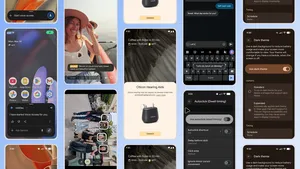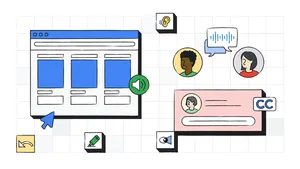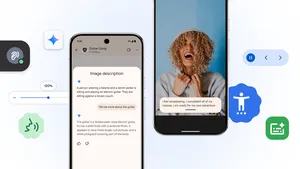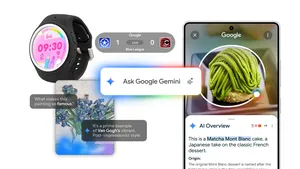Building accessible products for everyone
Over one billion people—15 percent of the population—live with some kind of disability, and this number will continue to rise as people get older and live longer. At Google I/O this week, we shared a few new ways that we’re helping people with disabilities. Here’s a bit more about these new products, as well as a behind-the-scenes look at how we designed I/O to make it more accessible and enjoyable for everyone:
Lookout:
Lookout is a new Android app designed to help people who are blind or visually impaired gain more independence by giving auditory cues about objects, text and people around them. People simply wear a Pixel device on a lanyard around their neck, with the camera pointing away from their body, and the app shares relevant information about the things around them, as they move through a space. Lookout is a big step in an effort to use technology to make the ever-changing and evolving world around us more tangible to people. It uses AI technology to bridge the virtual world with the physical world, making day to day tasks and interactions a little easier.Now, people who communicate using Morse code can do so on Gboard. To do this, we collaborated closely with Tania Finlayson, who was born with cerebral palsy and is an expert in Morse code assistive technology. Tania has been using Morse code to communicate since the 1980s, and she’s also the designer and co-developer of the TandemMaster. Her insights into the nuances of Morse code as an alternative assistive technology were invaluable throughout the design process, and by bringing Morse code to Gboard, we hope that more people might also be able to use Morse to communicate more freely. To get Morse for Gboard beta and to learn how to type Morse code, go to g.co/morse. This feature is currently available in the public beta version of Gboard, and will roll out more widely on Gboard for Android in the coming weeks.
YouTube Live Automatic Captions
In February, we announced that YouTube is bringing English automatic captions to live streams, and have been slowly rolling it out. With our new live automatic captions, creators have a quick and inexpensive way to make live streams more accessible to more people. With our speech recognition (LASR) technology, you’ll get captions with error rates and latency approaching industry standards.
Also at I/O, we introduced more features that developers can use to create more accessible app experiences for users with disabilities, including new accessibility testing, best practices and APIs for Android P.
Time and time again, we’ve seen the benefits of not just designing for one person or one community, but with them. By working together, we can truly make technology more available and useful to everyone.





